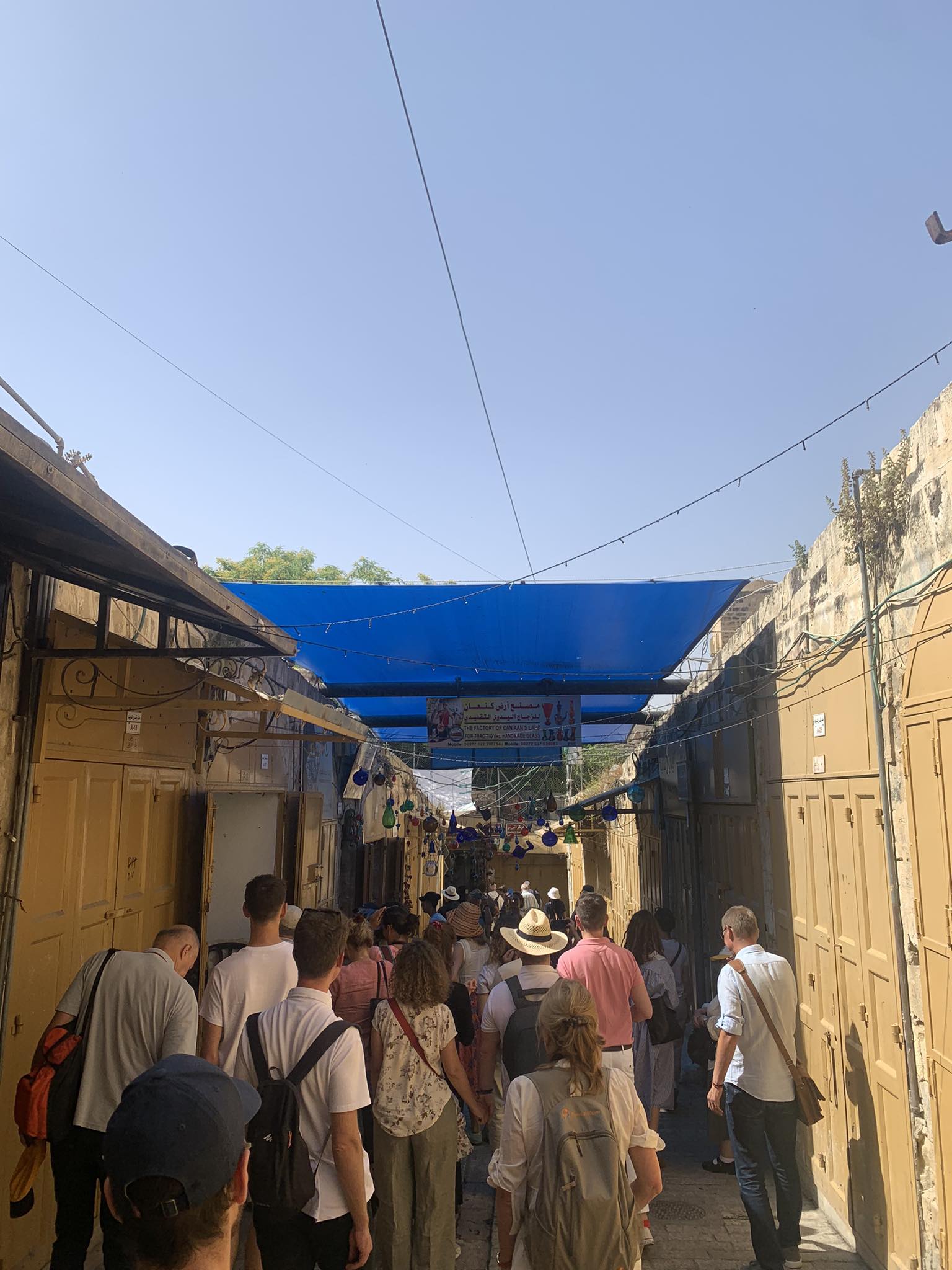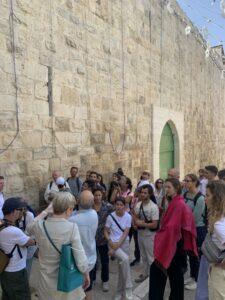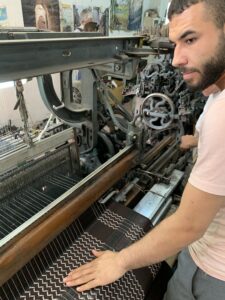Every year, it’s one of the most popular and eagerly-awaited outings on the Saturday Visits programme: Hebron!
Hebron, the city of the Patriarchs. The largest city in the West Bank, an economic powerhouse, and yet so entangled in a conflict and a situation that are so dramatic. Since 2017, the Old City has been declared a World Heritage “protected area”, as a site of “outstanding universal value in danger”.
Alongside Chantal and Anwar, Hebronites, the fifty or so visitors discovered the outskirts of the Old City, and in particular the militarised access roads leading to the Tomb of the Patriarchs, a site that is a focal point of tension. The cenotaphs of Sarah, Abraham and Isaac are erected here, in the heart of the Old City mosque. A wall separates the mosque from the synagogue, a deeply sacred place for both Jews and Muslims. Everyone fights over their share.
Chantal, originally from Saint-Malo, has a destiny linked to this very special town. Curious by nature, daring and full of spirit, she has made this city her own, and the shopkeepers recognise her from afar: “Well, there’s Chantal,” you hear in the souk! Her husband Anwar, a Hebronite and former Palestinian Minister of Culture, is also known as the white wolf in the alleys of the old town! The Abu Eishehs, who met in Paris as part of their parliamentary activities, returned to settle in Hebron with their young children after the Oslo Accords.
It’s a decision that has turned Chantal’s life upside down, as we can imagine: “Living here, we experience the conflict on a daily basis, as one bad news story follows another and the population is often humiliated. At the moment, it’s the lack of prospects that adds to this distressing situation. We wonder how much longer this situation will last, how many young people are losing hope, what positive element or pressure will unblock the situation. The Palestinians are resilient and I focus on the positive aspects of what we are doing.”
In 1997, Chantal and Anwar decided to set up France Hebron, a non-governmental organisation that helps the inhabitants of the Old City in a variety of ways. “Through its psycho-social support programme for the women and children of the Old City and through recreational activities for them. We also organise tours of the old town and the surrounding area, which give travellers a better understanding of the situation of these people. Finally, we try to get our public to travel through meetings and cultural activities.”
A breath of fresh air for those lucky enough to take part!
Hebron is also known for the quality and authenticity of its Palestinian crafts, much to the delight of our small group of Saturday visitors. It was an opportunity to discover the blown glass factory and its ancestral techniques, as well as the last keffiyeh factory in the whole of Palestine. It’s as if, in a way, Palestinian craftsmanship is becoming a lever of political resistance as well as an economic force.
Discovering Hebron is one of the most striking experiences of life here in Israel-Palestine. Leaving this city can leave you feeling very helpless, heavy and marked by man’s inability to resolve this dramatic conflict.
But Chantal keeps a watchful eye on us and gives us hope: “Above all, we must never give up, and draw strength from the warmth of the people here, from their hospitality and their sense of celebration, against all odds”!


